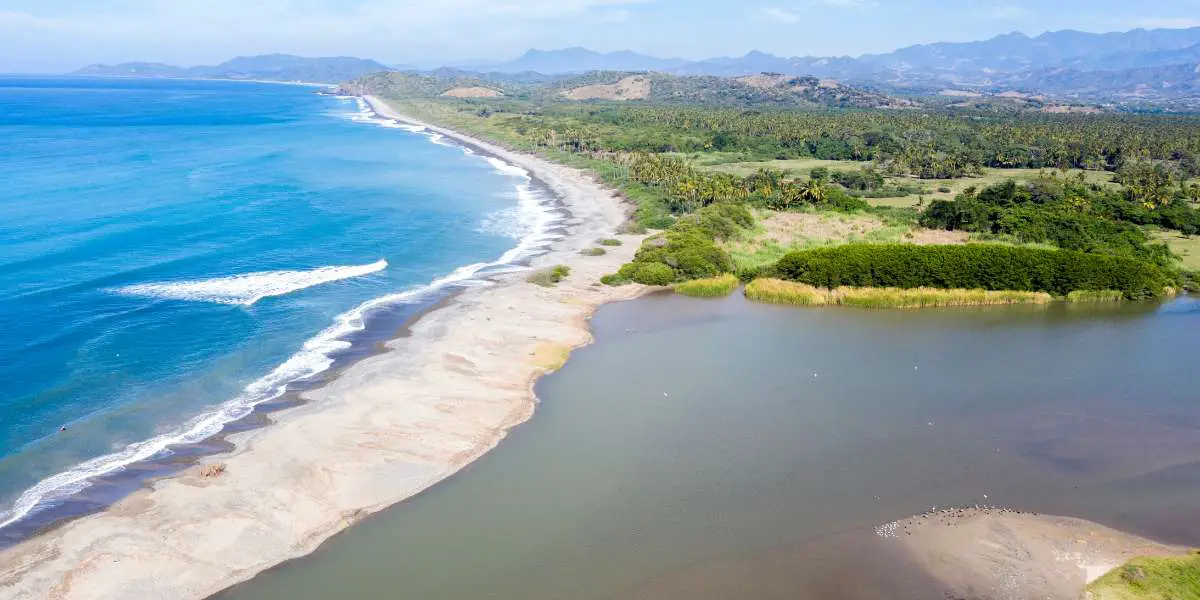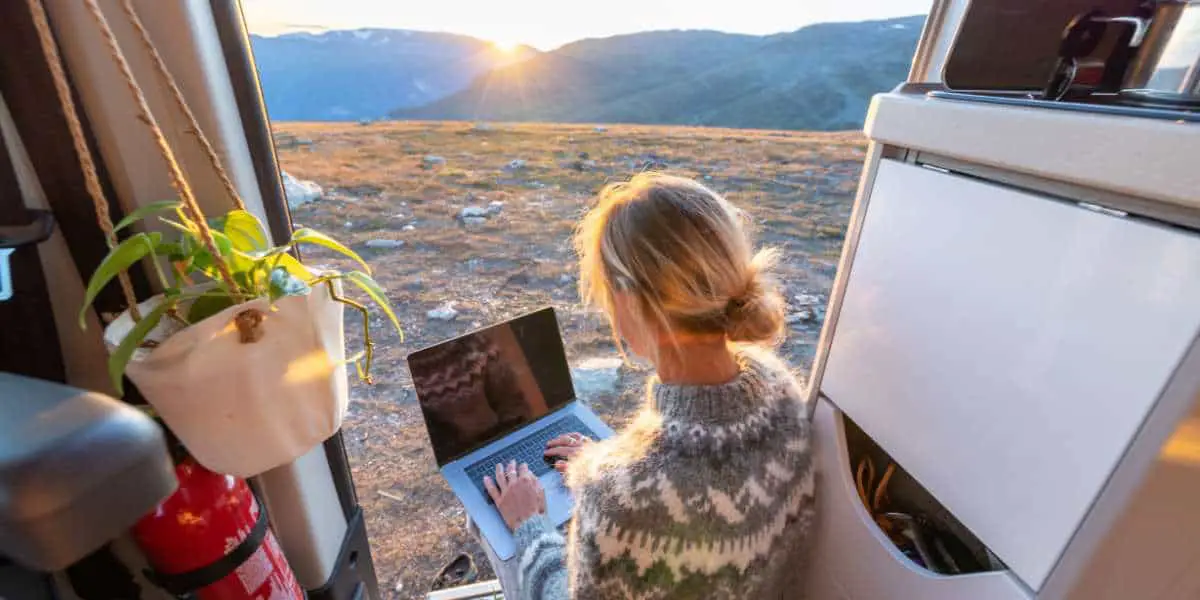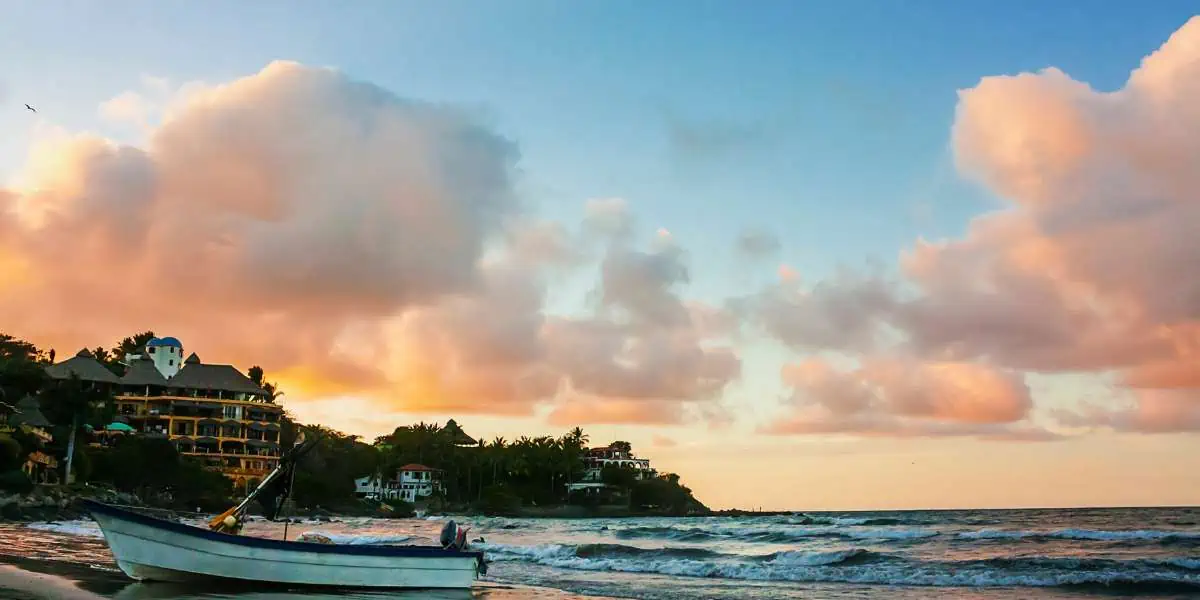There are thousands of things to do and see in Thailand, but the most popular places to visit in Thailand are the temples. There are over 40,000 Buddhist temples in Thailand, so it is nearly impossible to visit all of them in a short trip to Thailand.
Which temples should you visit? The 11 most incredible temples in Thailand that you need to visit are:
- Sanctuary of Truth in Pattaya
- Wat Luang – Temple of the Great Buddha Relic
- Wat Phra Kaew – Temple of the Emerald Buddha
- Wat Arun – The Temple of Dawn
- Wat Pho – Temple of the Reclining Buddha
- Wat Rong Khun – The White Temple
- Wat Tham Pha Plong – The 500 Steps Temple
- Wat Sok Tham Panthurat – The Monkey Temple
- Wat Benchamabophit Dusitvanaram – The Marble Temple
- Wat Traimit Withayaram Worawihan – Temple of the Golden Buddha
- Wat Sri Suphan – The Silver Temple
About 93 percent of Thailand’s population is Buddhist, but Thai temples feature a wide variety of styles and some even include Hindu, Taoist, and Western influences. Thailand has temples that have stood for centuries, but they also have temples that were just recently built and are currently undergoing construction.
Thailand’s temples are also host to some of the most beautiful images of Buddha in the world. Many of the temples are also great places for learning because many of them contain museums and exhibits pertaining to the history of Thailand.
1. Sanctuary of Truth in Pattaya
Construction of the Sanctuary of Truth began in 1981 when business tycoon, Lek Viriuaphant, decided he wanted to build a place of appreciation for art, culture, faith, and philosophy that was not strictly connected to any particular religion. Viriuaphant wanted to build a temple that honored traditional values of the earth, knowledge, and Eastern philosophy.
What It’s Known For
The entire building is made of carefully selected hardwood and the building was constructed using only ancient wood joining techniques. There is not a single piece of metal in the entire structure. The wooden temple has twenty stories and features beautiful elaborate carvings of Hindu and Buddhist symbols and stories.
The temple is still undergoing construction so you can even see the woodworkers crafting the temple while you are there. The temple also boasts incredible views of extravagant gardens and the ocean since it sits right on the beach.
Things to Do
- Guided tours of the temple begin every 30 minutes
- Thai Dancing Shows twice a day
- Thai Sword Fighting Demonstrations twice a day
- Elephant Riding
- Horse Riding/Carriage Ride
- ATV Riding
- Take a ride on an ancient boat and experience stunning views of the ocean
- Souvenir Shop
2. Wat Luang – Temple of the Great Buddha Relic:
Wat Phra That Lampang Luang, or the Temple of the Great Buddha Relic, was built around the 13th century CE.
What It’s Known For
This temple is a very sacred place in Thailand. It is called the Temple of the Great Buddha Relic because it is home to a strand of Buddha’s hair. The hair is said to have been given to the temple by Buddha himself when he visited approximately 2,500 years ago. The relic is housed alongside bones from Buddha in a stupa, or dome-like shrine, that is over 125 feet tall.
The temple also possesses the world’s oldest surviving wooden viharn, or assembly hall, and is thought to be one of the best examples of Lanna architecture.
Things to Do
As this temple is an active temple, there are not a lot of “touristy” activities to do there, but the temple is beautiful to look at. The temple offers a lot of authentic, well-preserved Buddhist art that you cannot see anywhere else. The temple is also, obviously, a wonderful place to come and worship.
3. Wat Phra Kaew – Temple of the Emerald Buddha:
Wat Phra Kaew, or the Temple of the Emerald Buddha, was built on the grounds of the Grand Palace in 1784 as a royal chapel. Over time, several Thai kings have added their own contributions to the structure.
What It’s Known For
The official name of the temple is Wat Phra Si Rattana Satsadaram, or Temple of the Holy Jewel Buddha. In English, the temple is commonly referred to as the Temple of the Emerald Buddha. This is a misnomer as the Buddha housed in the temple is actually made of jade. The Emerald Buddha is considered the most sacred object in Thailand and was carved from a single piece of Jade.
The Buddha is believed to date back to the 15th century and only HM the King is allowed to touch the image. Three times a year, the King changes the cloak on the Buddha in a ceremony to represent the changing of the seasons.
The temple itself is Rattanakosin style and features pillars inlaid with mosaic, rich marble pediments, and a green and orange tiled roof. The temple consists of over 100 buildings, including the official residence of the Kings of Siam. The temple’s large golden chedi, or stupa, is featured on the back of the 1-Baht coin.
Things to Do
- See a model of Angkor Wat commissioned by King Rama V.
- Check out the detailed painted murals that depict 178 scenes of Ramayana.
- Tour guides are on duty between 10:00 AM and 2:00 PM.
4. Wat Arun – The Temple of Dawn:
Wat Arun Ratchawararam Ratchawaramahawihan, or Wat Arun, was commissioned to be built in 1768 by King Taskin.
What It’s Known For
The temple is an iconic landmark of Bangkok, Thailand. The temple sits on the bank of Chao Phraya River and is an architectural representation of Mount Meru. According to Buddhist cosmology, Mount Meru is the center of the world. The temple was named for the Hindu god, Aruna.
The towers of the temple are Khmer style and are covered in colorful Chinese porcelain and seashells. The temple is commonly known as the Temple of Dawn because when the first light of the day hits the surface of the temple, it makes the temple sparkle.
Things to Do
- Climb the central prang, or spire, to get a wonderful view of the city.
- Take an evening cruise on the river to look at the temple when it is lit up at night.
- View the over 100 images of Buddha housed at the temple
- Get a look at a copy of the Buddha’s footprint.
5. Wat Pho – Temple of the Reclining Buddha:
Wat Phra Chettuphon Wimon Mangkhlaram Ratchaworamahawihan, or Wat Pho, was completed in the 16th century and is the oldest and largest temple in Bangkok. The temple was one of King Rama I’s main temples and even houses some of his ashes.
What It’s Known For
Wat Pho is named after a monastery in India where Buddha is thought to have lived. The temple is considered one of the best first-class royal temples.
The largest draw to the temple is its massive collection of over 1,000 Buddhas – the largest in the world. The temple is commonly referred to as the Temple of the Reclining Buddha because it is home to a 150-foot-long statue of a reclining Buddha. The statue is completely covered in gold leaf with mother of pearl decorations on the eyes and feet. The feet are also inscribed with 108 actions symbolizing the 108 actions that led Buddha to perfection.
The temple is also an active public university and is believed to be the earliest site for public education in Thailand.
Things to Do
- Learn the story of Ramayana through 150 marble reliefs on the outside walls of the temple.
- Learn about the previous lives of Buddha from murals dating back to the reign of Rama III.
- Get a Thai massage or take a Thai massage course
- Wat Pho is considered the birthplace of Thai massage and the massage school founded there still exists today.
- Many of the stone statues at Wat Pho display massage techniques.
- Sit under a Bodhi tree that is a descendant of the Bodhi tree from Bodhgaya under which Buddha reached enlightenment.
6. Wat Rong Khun – The White Temple:
The original building of the temple was in bad condition by the end of the 20th century, so Thai artist, Chalermchai Kositpipat, bought the temple, redesigned it, and even funded the rebuild from his own funds. The redesign of the temple began in 1997 and is still ongoing today. Current plans for the rebuild schedule it for completion in 2070.
Despite the temple being privately owned, monks do work at the temple and part of the reconstruction includes building accommodations for those monks.
What It’s Known For
Wat Rong Khun is a very unique temple that is a constantly changing work of art. It is definitely more of a tourist attraction than a traditional temple.
It features murals of Harry Potter, Hello Kitty, Michael Jackson, Matrix characters, Batman, and Kung Fu Panda, and more. These contemporary characters are featured in the temple because Kositpitat wanted to build a temple that depicted the cycle of birth and death that is caused by being too attached to the material world and the self. Anti-greed and anti-materialism motifs are found throughout the temple.
The temple is referred to as The White Temple because of its unusual white appearance. Most temples in Thailand are very colorful, but Wat Rong Khun is made with white plaster to symbolize the purity of Buddha. There are pieces of glass mixed into the plaster to symbolize Buddha’s wisdom.
The glass pieces make the temple sparkle in the sunlight, but the artist intended for the temple to be viewed in the moonlight where it seems to glow in a supernatural way. Today, the White Temple is one of the most photographed temples in Thailand.
Things to Do
- Walk across the bridge of rebirth that crosses a sea of outstretched hands representing the materialistic vices that drag souls to the underworld.
- Etch into your memory the contemporary-themed murals on the inside of the temple.
- Pictures are forbidden inside the temple.
- Use the restroom in the gold-leafed public restrooms that are jokingly referred to as the most beautiful restrooms in the world.
7. Wat Tham Pha Plong – The 500 Steps Temple
After becoming a monk, Luang Poo Sim Buddhacaro wandered by himself through the jungle, staying in caves, and practicing his Buddhist faith. In 1960, he found Pah Plong Cave and determined it was an ideal location for meditation. In 1967, he established the monastery and remained there until his death on August 14th, 1992.
What It’s Known For
The temple is dedicated to Luang Poo, making this temple a deeply sacred place for many Thai Buddhists. In 1992, HM the King Bhumibol granted Luang Poo the highest honor a Buddhist priest can receive, ‘Phra Nanasidhacan,’ for his faithful devotion to Buddhism and virtue. There is a small cave temple full of images of the meditation master.
Wat Tham Pha Plong is also a great temple for wildlife lovers and those who want to visit a temple that is off the beaten path. The temple is in a cave half-way up the side of a mountain and is surrounded by forest. It is also close to the Chiang Dao Wildlife Sanctuary, so it is a great place to catch a glimpse of wildlife.
Things to Do
- Sit and meditate in the cave temple.
- Take a meditation class from one of the monks there.
- Get in your daily workout by climbing the 510 steps it takes to reach the temple.
- It only takes about 10 minutes at a moderate pace.
- The temple provides free drinking water and umbrellas.
- There are lots of places to rest on your way up.
- Walk the stairs slowly while contemplating the Buddhist wisdom provided on green signposts along the way.
- Explore the Chiang Dao Caves in the surrounding area.
8. Wat Sok Tham Panthurat – The Monkey Temple
Originally, the temple consisted of a few Buddhist images inside a cave, but in 2012, the man made temple was built on the large limestone plateau.
What It’s Known For
The temple is not visited very often, so it is a lot less crowded than a lot of the other larger temples. It is located in Khao Sok National Park, the oldest evergreen rainforest in the world. The temple is commonly referred to as the Monkey Temple because there are a lot of long tail monkeys that live in and around the temple.
Things to Do
- Elephant Trekking in the National Park
- Hang out with the monkeys
- The monkeys are extremely friendly.
- Be careful, the monkeys are known to steal fruit right out of tourists’ hands.
- Meditate in the peaceful outdoors or inside the temple.
9. Wat Benchamabophit Dusitvanaram – The Marble Temple
Construction of Wat Benchamabophit, or Wat Benja, began in 1899 under the command of King Chulalongkorn. The construction was completed in 1911.
What It’s Known For
The temple is known as the Marble Temple because the temple is built out of white Carrara marble imported from Italy. It is a unique temple due to the presence of European influences in the construction like stained glass windows and Chinese design influences. The temple is exemplary of Bangkok architecture with multi-tiered roofs, high gables, and beautiful finials.
This temple is classified as a first-class Royal temple. King Chulalongkorn was ordained as a monk at this temple in 1873. The previous king of Thailand, Bhumibol Adulyafej, also spent his time as a monk at Wat Benchamabophit. In the ordination hall of the temple, there is a bronze Buddha image that marks the burial spot of King Rama V’s ashes. The temple was also featured on The Amazing Race 9 and is found on the back of 5-Baht coins.
Things to Do
- Bring food and other offerings (curry, rice, lotus buds, incense, toiletries, etc.) to the resident monks starting at 6:00 AM.
- Learn the history of 8 significant pagodas of Siam from wall murals in the ubosot, or the ordination hall.
- Take a tour of the grounds.
- View the evening candlelight procession around the temple during Makha Bucha in February and Wisakha Bucha in May.
10. Wat Traimit Withayaram Worawihan – Temple of the Golden Buddha
Wat Traimit was built in the late 18th century and was originally a less significant temple. The temple gained a lot of fame after it became the home of the Golden Buddha.
What It’s Known For
The biggest draw to Wat Traimit is the Golden Buddha, or Phra Phuttha Maha Suwana Patimakon. The image is the world’s largest solid gold Buddha image. It weighs 5.5 tons (11,000 lbs.) and is made of 83% gold. The 15-foot-tall Buddha image was created in the 13th century but was forgotten about for a time.
Before the image was moved to Wat Traimit, it was covered in stucco and colored glass to hide its true value from thieves. It remained covered in plaster for almost 200 years until it was accidently dropped while moving it to Wat Traimit in 1955. The cracked plaster revealed the gold underneath and now both the uncovered statue and some of the plaster are on display at the temple.
Things to Do
- Pay a visit to the Golden Buddha and learn more about its long history.
- Learn about China and the history of Bangkok’s Chinatown at the Chinese History Museum before setting off to explore the rest of Chinatown.
11. Wat Sri Suphan – The Silver Temple:
The original temple was built around 1502, but not much of it remains. The locals began to renovate the temple in 2004 and the renovations were completed in 2016.
What It’s Known For
Wat Sri Suphan is located in a silversmithing village in Chiang Mai, so when the decision was made to renovate the temple, silversmiths took the lead on the project. The interior and exterior of the main hall is covered in silver. The temple is described as the “World’s First Silver Sanctuary” and is made entirely of silver and aluminum. Even the rood tiles are plated with silver.
The temple is true to traditional Lanna design excluding the material used. Within the temple there are many contemporary touches like guitar-playing gods and goddesses with UFOs in the background embossed on the walls. On the outside of the temple, there are medallions representing important international cities and ASEAN countries. The temple also features Taoist and Zen elements.
Things to Do
- Explore the local silver village during the day.
- You can buy or commission silver pieces from many of the active silver studios
- There is also a working silversmithing school in the area.
- Get to know the monks and ask them questions about their lives
- There are “monk chats” that occur from 5:30 PM – 7:00 PM on Tuesdays, Thursdays, and Saturdays.
- After the monk chat, hang around for a group talk and meditation that goes until 9:00 PM
Conclusion
Thai temples are beautiful and artful, but they are also sacred. It is important to be respectful and dress modestly. Remember to remove your shoes when entering worship areas and abide by the signs that are posted in visitor areas. For more information about proper etiquette when visiting Thai temples and Thai culture in general, check out the following books:
Thai Buddhist Temples: A Guide to Theravada Temples in the Dhammayutti Sect by Frances Kiani
Thailand: A Quick Guide to Customs & Etiquette (Culture Smart!) by Roger Jones
If you want to learn more about the specific architecture and designs of Thai Buddhist temples, check out What’s What in a Wat: Thai Buddhist Temples by Carol Stratton.





